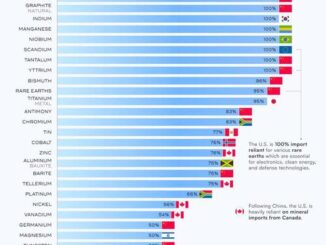
- EV sales accounted for 8.6% of the global light-duty vehicle market, compared to just 2.5% in 2019, as per a new International Energy Agency report.
- Oil and gas investors will receive the latest revelation with a bit of trepidation, considering that EVs are seen as the arch-nemesis of the sector.
- It could still be decades before the impact of the EV revolution begins to be truly felt by the fossil fuel sector.

With the global energy transition in full swing, few clean energy sectors, if any, are expanding faster than the electric car market. A decade ago, a grand total of 130,000 EVs were sold globally; fast forward to the present, and nearly a similar number are sold in just a week. To use a cliché, the EV sector has truly been playing chess while everyone else plays checkers, with sales of battery-electric and plug-in hybrid combined more than doubling last year to around 6.6 million vehicles.
EV sales accounted for 8.6% of the global light-duty vehicle market, compared to just 2.5% in 2019, as per a new International Energy Agency report.
As expected, Tesla Inc. (NASDAQ:TSLA) remains the company to beat in the EV space, with the EV kingpin managing global sales of 936,000 units last year. Tesla sold 352k units in its U.S. home turf; 321k in China, 170k in the European market and 93k elsewhere. EV sales in the U.S. totaled 487,560 units in 2021, an 89% Y/Y increase over the 257,872 units sold in 2020.
Second-placed Volkswagen AG (OTCPK:VWAGY) managed to sell 762k units; BYD Company (OTCPK:BYDDF) sold 598k units, General Motors (NYSE:GM) shipped 517k units while Stellantis N.V. (NYSE:STLA) did 343k units.
Even though Tesla remains the world’s leading EV manufacturer with 14.2% market share and an even more commanding 65.8% share in the U.S., the rest of the pack is rapidly closing in. Bank of America has predicted that Tesla’s share of U.S. EV sales will fall from 78% in 2018 to around 20% in 2024, while IHS Markit sees Tesla with less than 15% of U.S. sales by 2027.
However, that massive contraction in market share will not be due to any weakness on Tesla’s part–the company expected to maintain robust growth in the current year–but rather due to explosive growth by the EV universe with 146 EV models expected to be available in the U.S. in 2025, compared to just 24 in 2020.
Nixing oil demand
Obviously, oil and gas investors will receive the latest revelation with a bit of trepidation, considering that EVs are seen as the arch-nemesis of the sector. The latest EV report suggests that the transition from ICEs to EVs is happening at a faster-than-expected clip, perhaps more so due to a flurry of ICE giants joining the EV race.
Over the past few years, the EV momentum has gone into overdrive thanks to the ESG craze and the shift to renewable energy. Last year marked a fresh high for the EV industry after the global electric-car market recorded growth of 41%, according to an International Energy Agency report.
Last year, Bloomberg News’ Akshat Rathi claimed that ‘every F-150 Lightning destroys 50+ barrels of oil demand forever.‘ The F-150 Lightning is Ford Motors‘ (NYSE:F) electric equivalent of the marquee Ford-150 truck.
It’s becoming a familiar refrain by a cross-section of experts, including Stanford University economist Tony Seba who went ballistic a few years ago and declared that EVs will obliterate the global oil industry by 2030.
But how much threat does the EV revolution actually pose for the fossil fuel sector?
A report from IHS Markit shows that in 2020, light plug-in and fuel-cell vehicles, as well as electric city buses and two-wheelers, collectively displaced about 370,000 barrels per day of global oil consumption, a figure that is projected to grow to 1.5 million barrels per day by 2025, equal to about 1.4% of the projected level of total world oil demand.

Source: IHS Markit
Electrifying America’s vehicles is a critical part of combating climate change, considering that the transport sector accounts for 21% of total GHG emissions. The burgeoning EV sector is moving full-steam ahead, but has to contend with a more than century-old ICE industry.
Bloomberg New Energy Finance (BNEF) has projected that EVs will account for ~8% of the global fleet by 2030 and reach 31% of the global fleet by 2040. The new energy research provider also says that it will take at least two decades for EV sales to hit 60% of all new vehicle sales.
As Dean Foreman, chief economist at the American Petroleum Institute, has quipped: “EVs can “eat into traditional market share for liquid fuels, but that’s largely a developed economy, or rich country issue at this point.”
Bloomberg New Energy Finance estimates that road fuel oil demand will peak in 2027, but it will take another decade for the impact of advancements to be materially felt. Emissions will almost halve by 2050, but the sector will still be nowhere near net zero. In the best-case scenario, by the 2050s, fossil-derived road fuel demand will fall below levels last seen in the early 1970s. In this case, oil-related emissions will drop to 3.4 gigatons CO2 by 2050, down from almost 6.5Gt in 2019.
That said, the EV sector could end up hurting the oil sector in the long run, with BNEF predicting that electric and fuel cell vehicles will displace 21 million barrels per day in oil demand by 2050.
In other words, it’s probably going to be decades before the impact of the EV revolution begins to be truly felt by the fossil fuel sector.



